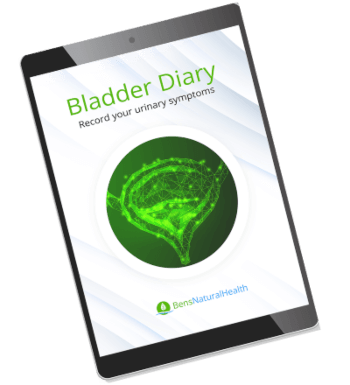- What is bladder prolapse?
- What are the symptoms of bladder prolapse?
- Causes & risk factors
- Can you live with a prolapsed bladder?
- Can you push a prolapsed bladder back in?
- What worsens bladder prolapse?
- When to see a doctor
- Treatment for bladder prolapse
- How to fix a prolapsed bladder without surgery?
- Conclusion
- Source
Bladder prolapse is sometimes called fallen bladder or dropped bladder.
They are layperson’s terms referring to a health condition called cystocele or anterior vaginal wall prolapse.
It is difficult to estimate the number of women affected by a prolapsed bladder as most people have minimal or no symptoms.
Embarrassment to tell the symptoms of their bladder falling out and vaginal discomfort also hinders women from seeking help.
A decade ago, the Women’s Health Initiative study looked into the prevalence of bladder prolapse in women in the United States.
Cystocele happens to 34.3% of women with a uterus and 32.9% of those who underwent a hysterectomy (uterus removed).
Today, following the aging population, researchers anticipate a 50% increase in women suffering from pelvic organ prolapse, including bladder prolapse, by the year 2050.
What is bladder prolapse?
In young, healthy women, pelvic organs such as the uterus, bladder, rectum, and vagina are held by strong pelvic floor muscles and connective tissues to remain in their normal position.
When this “hammock” of pelvis tissues is weakening, pelvic organs can bulge or drop into the hollow canal (the vagina).
Our bladder is located directly in front of the uterus and the upper part of the vagina. When its surrounding tissues lose their strength, the bladder drops and compresses the anterior wall of the vagina.
In stage 1 and stage 2 of bladder prolapse, the prolapsed anterior vaginal wall is still inside the vaginal canal, so you may not be aware of the condition.
When the bladder sags down further, a bulge (anterior vaginal wall prolapse part) can be seen at the vagina opening or even falling out from the body.
What are the symptoms of bladder prolapse?
Many women with bladder prolapse have no symptoms until situations progress to greater severity.
Therefore, pelvic organ prolapse, including bladder prolapse, is rarely reported (3–6%) by patients, and most are only detected after a physical examination (41-50%).
Symptoms of bladder prolapse include:
- A bulge or sag from the vagina opening. It is reported by 3% of women in the United States.
- Feeling like something is coming down into the vagina, as if you are sitting on a small ball.
- Feeling of heaviness or fullness in the lower abdomen and genitalia.
- Vagina discomfort or a sense of dragging.
- Sex problems. Although sexual intercourse will not cause or worsen pelvic organ prolapse, women may feel vagina discomfort or numbness during sex.
On top of the above symptoms, women with bladder prolapse may experience symptoms caused by pressured bladder, such as:
- Incomplete voiding, feeling like your bladder is not emptying fully
- Increased needs to go toilet (frequency)
- A sudden urge to urination that is difficult to hold back (urgency)
- Difficulties in initiating and maintaining the urine flow (hesitancy)
- Need to push hard for the urine to come out (straining)
- Slow urine stream
- Urine leakage during coughing, sneezing, lifting heavy objects, exercising, and prolonged standing (stress incontinence)
Get your FREE bladder diary
- Daily bladder diary
- Better understand your urinary symptoms
- Step-by-step guide
Causes & risk factors
Many causes can contribute to the development of a prolapsed bladder. Take note if you have these risk factors.
Overweight and obesity
Overweight women with a body mass index (BMI) over 25 are 36% more likely to have pelvic organ prolapse.
Meanwhile, the risk of prolapse increases to 47% among obese women (BMI more than 30).
Once the extra weight causes a bladder prolapse, there is no turning back. Losing weight now will not relieve the symptoms nor reverse the progression of the prolapse.
In fact, some women with prolapsed bladder might have worsening symptoms after taking the initiative to slim their bodies.
Aging
Although prolapse can occur at any age, most women develop it after menopause, peaking when they are 70-ish.
Age-related changes bring various health conditions following deteriorating physiological status.
Examples of aging effects of bladder prolapse include weakening pelvic structures (pelvic floor muscles, ligaments, nerves, and blood vessels) and structural changes of collagen, which precipitate vaginal wall weakness and, hence, a higher risk of bladder prolapse.
Pregnancies and childbirth-related events
The strength of your pelvic floor muscles directly determines your risk of having pelvic organ prolapse.
A recent retrospective study investigated risk factors of pelvic floor muscle strength in more than 20,000 women.
It was found that vaginal delivery, a baby with higher birth weight, and procedures during childbirth, such as cutting the perineal tissues (episiotomy) and using forceps to assist delivery, contribute to weakening pelvic floor muscles.
Besides, your likelihood of having a prolapsed bladder increases following repeated pregnancies.
The prevalence of pelvic organ prolapse is reported at 12.8%, 18.4%, 24,6%, and 32.4% for having 0, 1, 2, and 3 babies, based on a study among women in the United States.
Conditions that increase pressure in the abdomen
A high intra-abdominal pressure burdens your pelvic support system, leading to prolapse of the anterior vaginal wall and other pelvic floor organs.
Health conditions correlated with elevated pressure in the abdomen include constipation, chronic coughing, and obstructive lung diseases.
Genetic diseases that decrease collagen production
Collagen is the main component of connective tissues. Together with elastin, they maintain the elasticity and tensile of our tissues.
Therefore, collagen deficiency makes pelvis tissue more vulnerable to bladder prolapse. Examples of congenital diseases affecting collagen production are Marfan and Ehlers-Danlos syndrome.
Although the exact mechanism of how collagen is linked to pelvic organ prolapse is yet to be figured out, scientists have conducted experiments on mice, in which the result is clear evidence of collagen structural abnormalities being a risk factor.
The percentage of disarranged collagen is higher in prolapsed vaginal tissues than in those without prolapse.
Family history
If your female family members have pelvic organ prolapse, you are more likely to develop a cystocele.
Positive family history is correlated with a 2.3- to 2.7-fold increase in getting pelvic organ prolapse, based on a recent review across 43 studies.
Recurrence of the condition is also found to be 1.4 times higher in women with a family history of prolapse.
History of pelvic surgery
Operation of the pelvis, especially hysterectomy (removal of the uterus), may damage the fascia (sheet of connective tissues), pelvic floor muscles, and nerves.
As a result, the pelvic floor is weakened, predisposing the woman to vagina prolapse and a dropped bladder.
The incidence of post-hysterectomy vault prolapse varies from 2-43%, and a long-term follow-up study revealed that the route of surgery (robotic, per vaginal and open surgery) does not affect the chance of prolapse recurrence, grade, and subsequent treatment options.
Can you live with a prolapsed bladder?
Yes, you can live with a prolapsed bladder; it is not a life-threatening health condition. However, your quality of life can significantly impact when it gets severe.
Most women diagnosed with cystocele will have no change or only a slightly increased prolapse size in one year.
Although slow, it is progressive. If left without proper management, it can cause many complications.
Examples are:
- Urinary tract infections, causing pain, fever, and foul-smelling discharge
- Ascending infections, including infection of the bladder (cystitis) and kidneys (pyelonephritis)
- Acute urinary retention due to compressed urethra or ureter by the prolapsed bladder
- Ulcers, bleeding, or infections of the vaginal mucosa tissue
- Sexual dysfunction
- Loss of control of urine flow (urinary incontinence)
- Psychological pressure
- Complete vaginal prolapse (procidentia)
Can you push a prolapsed bladder back in?
You should not try to push a prolapsed bladder back by yourself. Reducing a cystocele requires specific techniques and should be done in a sanitized environment. See a doctor and let the professionals help you.

What worsens bladder prolapse?
What triggers a bladder prolapse can also worsen it. These include being overweight or obese and situations that increase intra-abdominal pressure, such as heavy lifting, chronic coughing, and constipation.
To prevent your bladder from prolapsing further, consider these health tips:
- Avoid heavy lifting and use the correct weight-lifting technique. Use your leg power instead of your waist or back.
- Control coughing. If you have a chronic cough or bronchitis, consider treatment and don’t smoke.
- Prevent constipation. Increase fibers in your diet and drink plenty of fluids.
- Weight control. For most adults, an ideal BMI is between 18.5 to 24.9. Talk to your doctor to understand your ideal body weight and get advice on losing weight in healthy ways.
When to see a doctor
If you feel or see a bulge coming out from your vagina opening or have any symptoms hinting at a prolapsed bladder (as discussed previously), report to your family doctor or visit a general practitioner.
Most women become symptomatic at stage 2 of bladder prolapse or higher. Seek help when you notice any signs of bladder prolapse.
There is no need to shy away; many women have this same health condition. An earlier diagnosis allows prompt treatment and hence, a better prognosis.
Treatment for bladder prolapse
According to a study involving more than 10 million women in the United States, 12.6% of them will need prolapse surgery in their lifetime.
However, it is also not uncommon for a mild (stage 1) prolapse to regress without surgical intervention.
Understand the treatment options for your bladder prolapse, and talk to your doctor. They will recommend the best management plan to improve your health condition.
Broadly, we can classify choices of treatment for prolapse bladder into three groups: expectant (‘watch and wait’ approach), conservative, and surgical.
If your condition is mild, your doctor may suggest expectant or conservative management. Otherwise, surgery or an operation may give a better outcome for your prolapsed bladder.
Other factors influencing your doctor’s consideration while planning your bladder prolapse treatment include, and are not limited to:
- Age and general health condition
- Physical and sexual activities
- Family planning, or wishes to bear more children
- Degree of prolapse
- Associated prolapse of other parts, such as uterine prolapse and posterior wall prolapse
- Nature and severity of bladder prolapse symptoms or complications
- Past medical or surgical history
- Any previous prolapse and its recovery outcome
- Surgical expertise of your doctors
Anterior vaginal repair (anterior colporrhaphy)
“Rrhaphy” means sewing or suturing in medical terms, while “colpo” refers to anything related to the vagina.
Therefore, anterior colporrhaphy, sometimes called anterior vaginal repair, is a procedure to repair the anterior vaginal wall prolapse by suturing. It is the most common surgery to fix a prolapsed bladder.
During the operation, your surgeon will put the bladder back in its normal position and suture the overlying tissue (fascia) that supports the bladder.
Excess vaginal wall tissues may be trimmed and sewn back to tighten the lax anterior vaginal wall.
Anterior vaginal repair is usually done under general anesthesia, meaning you will be fully asleep during the operation and not feel any pain.
You may need to stay in the ward for a few days to a week and rest well at home for 6 to 12 weeks.
Sacral colpopexy
Sacral colpopexy is a surgery that fixes the top of the prolapsed anterior vaginal wall to the tailbone (sacrum) using a surgical mesh or graft.
Therefore, it is also called vaginal mesh surgery. The graft or mesh supports and holds the vaginal wall back in the pelvis.
However, you can’t have vaginal mesh surgery in the United States now.
All transvaginal mesh products for treating pelvic organ prolapse in the market were banned by the United States Food and Drug Administration (FDA) in 2011 due to an increased number of reported adverse events.
However, if you already have a surgical mesh in place, do not worry. Continue your routine follow-up care and notify your healthcare providers if you encounter any symptoms, such as persistent vaginal bleeding, foul discharge, groin pain, or pain during sex.
Hysterectomy
Bladder prolapse is often associated with prolapse of surrounding tissues or organs. If you have a prolapsed uterus in addition to the fallen bladder, your doctor may suggest a hysterectomy, a surgery to remove your womb.
This can help relieve the pressure exerted on the vaginal walls and reduce the recurrence of prolapse.
Colpocleisis
Colpocleisis is a surgery that closes the vagina permanently; therefore, nothing can bulge out from the vaginal opening.
Since the impact is non-reversible and significantly affects one’s physical needs (the woman can no longer have vaginal sex), this operation is only offered to women with severe bladder prolapse and when all other treatment options fail.
How to fix a prolapsed bladder without surgery?
As mentioned, most women do not need surgery to fix a prolapsed bladder.
Conservative treatments will work just fine, and they save you from all potential risks and complications of an operation, such as infection, pain, or anesthesia-related risks.
Now, let’s look at some main streams of conservative management for bladder prolapse.
Vaginal pessary
Vaginal pessaries are often the first choice in treating a prolapsed bladder. They are plastic or silicone devices inserted into the top of the vagina to support your pelvic floor muscles in holding the prolapsed part in its original position.
Vaginal pessaries come in different shapes: ring, U-shaped, disc, or cube. A ring pessary is the most popular choice, as it can be easily inserted and removed by yourself. Talk to your doctor to learn how to use the pessary and clean it properly.
Estrogen replacement therapy
For peri- or post-menopause women, estrogen replacement therapy may help ease your bladder prolapse symptoms.
The estrogen hormone can be taken in the form of cream (directly applied to the vagina), tablet (inserted into the vagina), and ring, which provide a steady release of the hormone over a period of time.
Pelvic floor exercises (Kegel exercises)
Pelvic floor exercises have been proven effective in strengthening the pelvic floor muscle regardless of gender.
When it comes to bladder prolapse, it works wonders in improving bladder prolapse symptoms, pelvic floor muscle function, and quality of life.
Unlike other workouts, doing Kegel exercises is super easy. You can do it anytime, anywhere, and in any position, while remaining unnoticed by others.
Now, how do you do Kegel exercises?
Imagine you are holding an urge to pee or stopping a urine stream. Feel the muscle of your vagina contracting, or you can insert a finger into your vagina to feel the muscle moving up.
Then, imagine resuming the urine– you will feel your vagina muscle relaxing. Repeat the contract-relax cycle ten times (one set) and do three sets a day in the morning, afternoon, and night. You shall see an improvement in symptoms after 4 to 6 weeks.
Conclusion
Bladder prolapse is a common health condition among women. Do not be shy and seek medical attention if you suspect yourself of having it.
Treatment options are vast, and the outcome can be optimized if it is started earlier. Discuss with your healthcare provider to customize a management plan that works best for you.
Explore More








